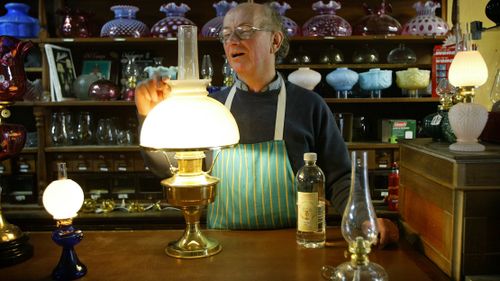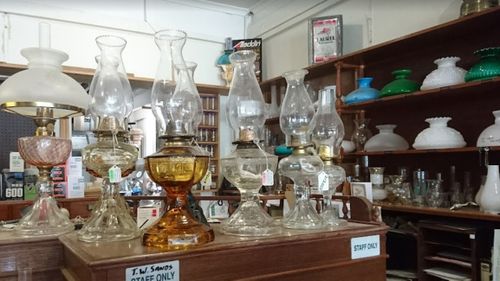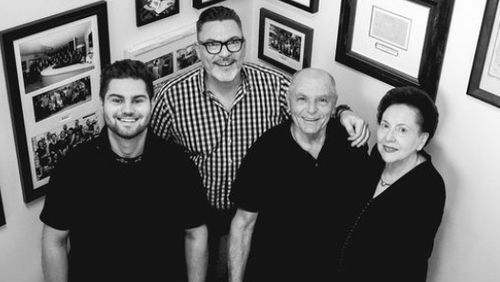But there are still Aussies quietly making a living from unusual professions which you’d be forgiven for thinking had died out.
Like Sydney chimney sweep Mark Steuerwald, 57.
Because if you want to burn a real fire, it’s essential to maintain your chimney.

And it’s not just owners of older homes who book his company, London Chimney Sweeps.
He said many architect-designed modern homes also have real fires and so need his expertise.
“The main reason for getting a chimney cleaned is to remove the soot that’s built up,” Steuerwald told 9news.com.au.
Keeping city’s fires burning
Steuerwald learned the business from his uncle who emigrated from Cornwall in England, starting as a Saturday boy from age 12.
After pursuing a job in accounting, he took over the firm in 1988.
And anybody who imagines the profession as being a little like that portrayed in movie Mary Poppins would be correct. “Except we don’t dance,” he quipped.
And while huge brushes to clean out the chimney are still a staple of his kit, modern tech like cameras and drones have made the job easier – and safer.

Industrial vacuum cleaners also make it a clearer task than it used to be.
The job also allows Steuerwald a glimpse into some incredible homes.
“I do a lot of heritage places and have done some jobs for some famous people, actors and TV personalities,” he said.
Sometimes he finds items in the chimneys that shouldn’t be there.
“One place where I found a cash box in the chimney with a lot of jewellery in it,” he said.

Revealed: The top 15 highest-paying careers in Australia
“Unfortunately, the main thing we get out of chimneys is dead birds and possums.
“We do get live ones out as well and probably some of the most frustrating things is trying to evict possums out of chimneys.
“They just don’t want to leave.”
“The other thing would probably be really old chimneys that have never been maintained, so you get 100 years of gunk in them.”
He reckons there are around 50 chimney sweeps left in Australia.
A call-out costs from $295 to $395.
Lamp makers bring warm glow of light
The warm glow of a kerosene lamp is still in demand, according to Anne MacLeish, 66.
She runs lamp house TW Sands and Co with her ex-husband Bernard Holmes.
Read Related Also: TimTheTatman Net Worth
The shop, now based in Huntingdale in Melbourne’s south-east, is one of the few stores of its type left in the world, and has customers as far away as the UK and USA.
“Even those who actually do have electricity sometimes like to switch the light off and enjoy them,” she said.
“It’s a bit like going back in time.
“It’s an ambience you get with an oil lamp you don’t get with electricity.”

Holmes bought the firm, established in 1918 by Thomas William Sands in the 1970s.
They can also make bespoke lamps.
“It goes from really simple things, not much more than a candle though to very ornate lamps,” she said.
“We send stuff all around the country and people send items to use that they can’t repair themselves.”

They don’t just supply lamps, but help with devices like fridges which run off kerosene too, and are popular with those living off the grid either by choice or necessity.
Lamps start from $40 to around $800.
They’ve supplied TV shows and movies, including romance film South Solitary, and reality show Outback House as well as bars that want to create a unique atmosphere.
“It went ballistic,” he said.
“We had people coming in with cases of old photos and negatives and crates of slides they wanted to digitise.”

As well as converting people’s old photos to digital files and working for professional photographers, Maietta has seen a revival in developing film for customers.
That’s despite most people owning a mobile phone capable of taking sharp photos.
“The film has gained popularity in the younger kids,” he said.
“In about the past eight years, it has been getting busier and busier.
“I think it’s that trend towards analogue – similar to vinyl records.
“People are seeing a fascination of what was old.”
It costs $21 to develop and print a film roll, compared with around $10 in the heyday of shooting on film.

The company which was started by his parents, Frank and Rosanna in 1967.
The best part of his job is helping customers “relive history”, he said.
“On a weekly basis, we’ll have someone come in and say, ‘I’ve found some films in my dad’s drawer, he’s passed away can we process it?’
“Often it’s the only image they have of a grandparent or a grandparent they have when they were young.
“Unfortunately if the film’s not been well looked after nothing turns out but sometimes, there is something faint.”







